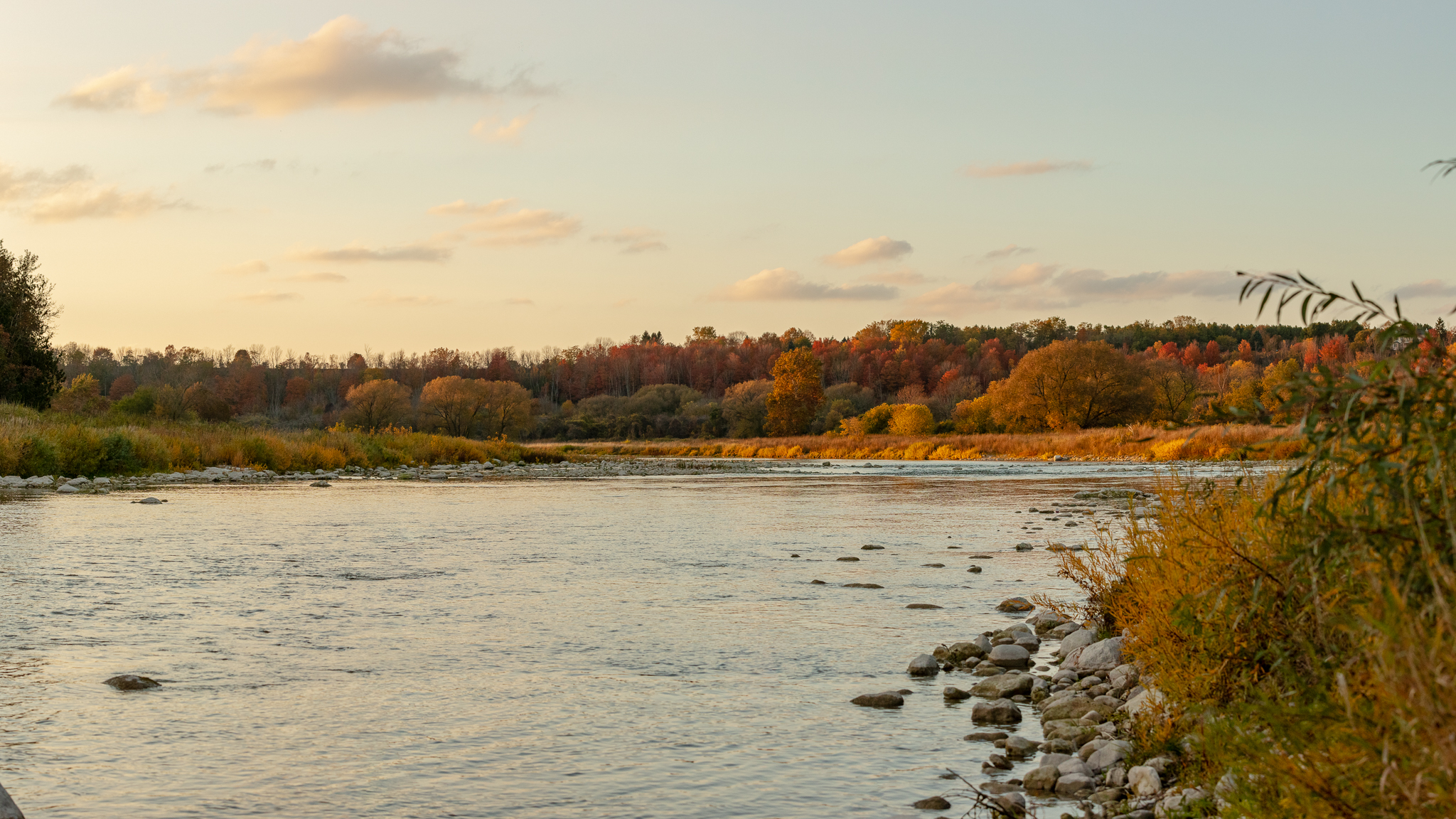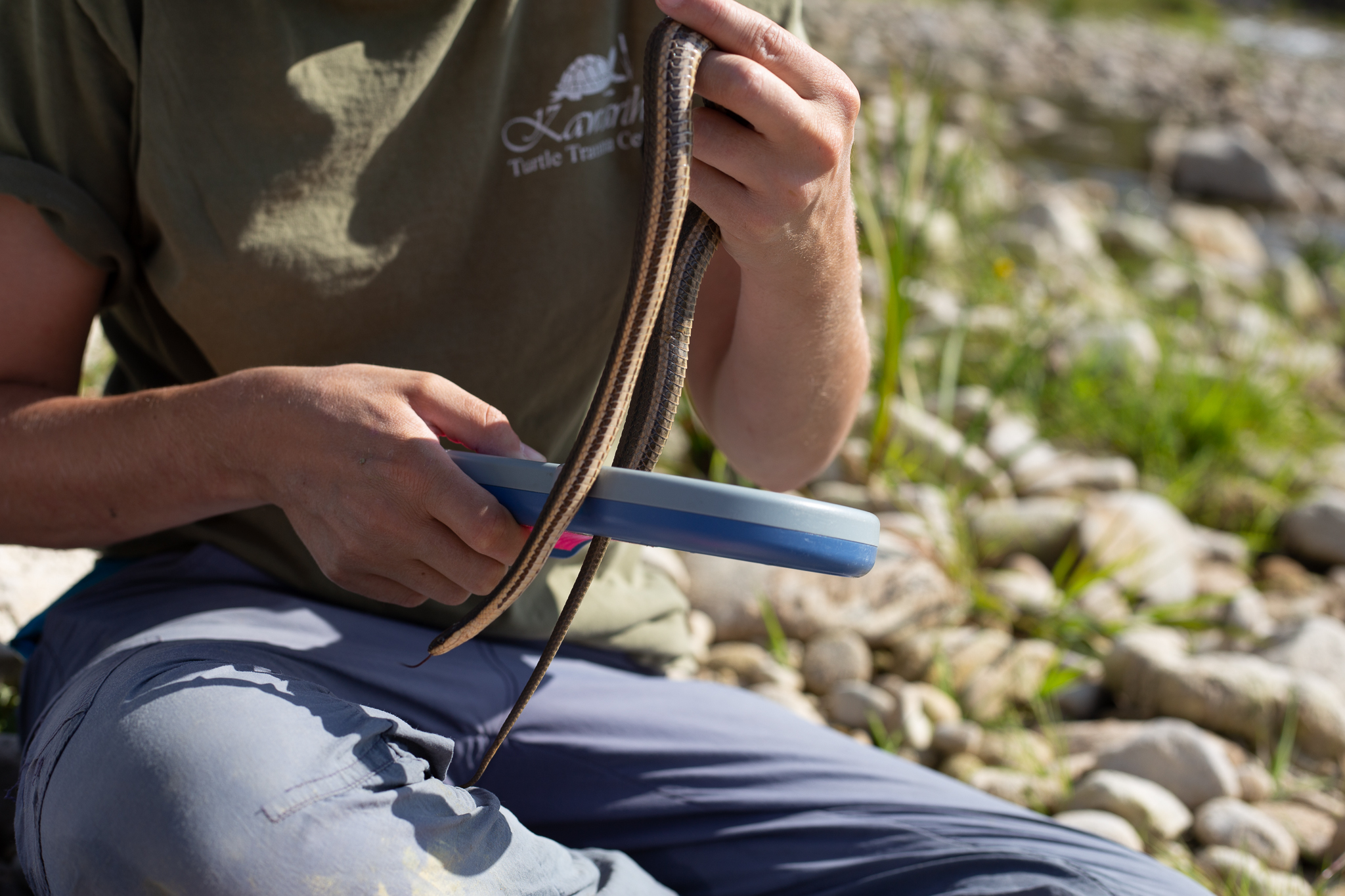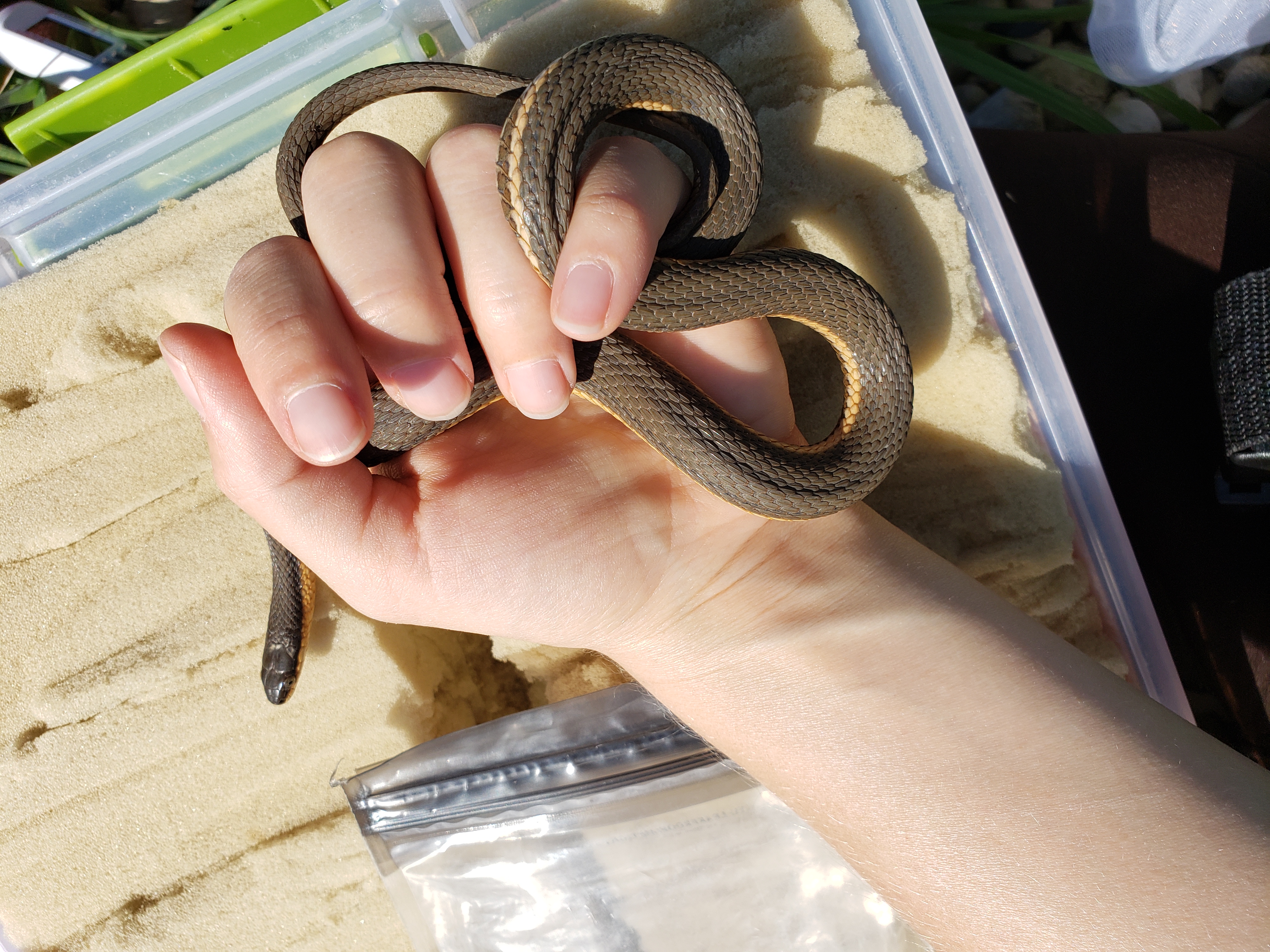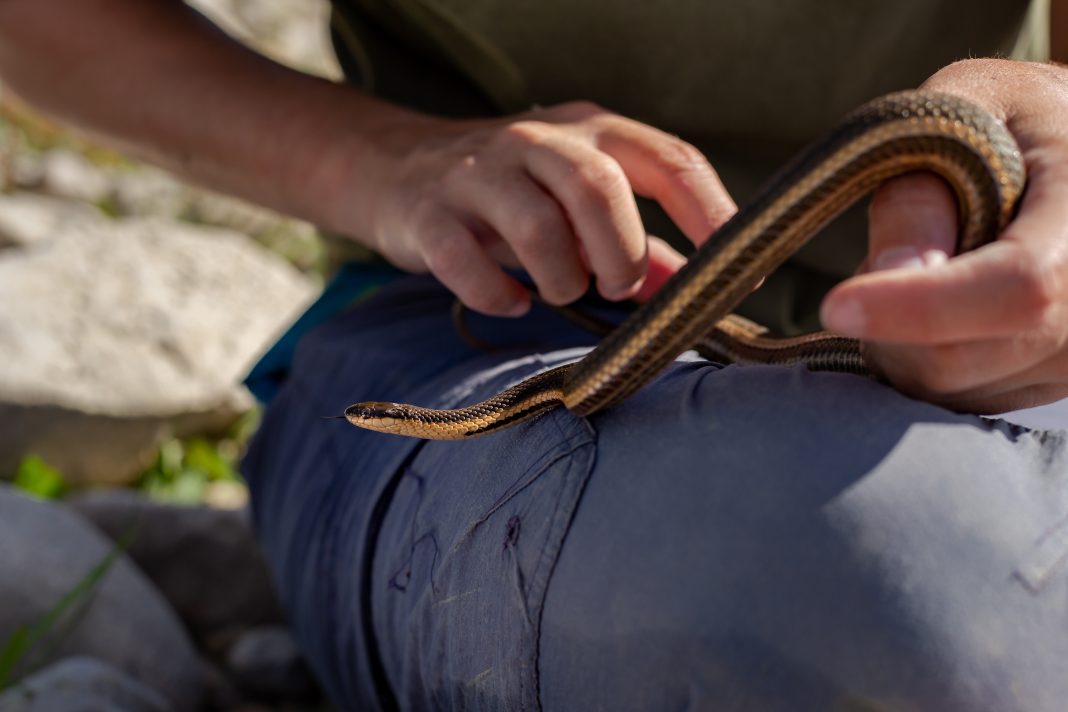Written by: Katie Wintersgill
As a part of joining the Canadian Conservation Corps, a nine-month youth program providing immersive experiences in conservation, I participated in a three-month internship with the Huron Stewardship Council over the late summer and fall of 2019. I highly value the portion of that time spent working along the Maitland River for both its beauty and subtle conditions that support At-Risk species. It is because of this river that the HSC is involved in a surveying program monitoring the population and habitat of the endangered Queensnake. The Queensnake is a harmless, semi-aquatic snake that requires a very specific habitat to survive. This includes a river with good flowing water and a rocky bottom that provides space for the Queensnake’s diet: freshwater crayfish. In addition, the area must maintain temperatures above 9 degrees Celsius during the snake’s active months. Areas of the Maitland River provide these requirements often enough throughout to support the largest population of Queensnakes recorded in Canada. Working in such a specialized area with an endangered species allows for a dual perspective in both observing the species thriving accompanied with a growing realization of how quickly they could disappear.


Many successful days were spent along the edge of the water in areas of known high activity. We would turn over rocks to find resting snakes to record, measure nearby vegetation, and wade into the water to catch crayfish to count – a part of the survey often turning into a boisterous competition. You always want to be the one who catches the most or finds a unique specimen, like a fully blue Oronectes propinquus. As the excitement of finding these creatures transitions into the repetition of recording data, a quiet metronome begins to play to their existence. A beat for each point on the data sheets, weather, air temperature, water clarity, water temperature, GPS coordinates, dominant size of rocks in the area, and on it goes. As the drone plays on, I found myself taking notice of the areas around the Queensnake’s preferred homes. Areas often only metres away or just across the river begin to look completely uninhabitable. The beat skips and the snake isn’t there. Whether that is bedrock instead of cobble, stagnant water or not enough sun exposure, it becomes apparent how dependent this species is on habitat stability. While I greatly enjoyed the time I got to spend on the Maitland, I often started seeing the viable areas as oases in the desert. An ironic view of a meandering river but for the Queensnake it seems to suit.

It drives many questions for these little snakes. If your home ran out of food, how far would you cross a hostile landscape to find it? If you had no flat rocks to hide under, how long before the bird above makes you a meal. If your hiding spots are in an area of high foot traffic, do you risk getting stepped on? If the river’s water level drastically changes or becomes contaminated with runoff, is there anywhere else to go? I can’t answer these questions but the experience has allowed me to see how vital the work being done by the stewardship council along with surveying being done across Canada can be in order to show the importance of keeping our natural spaces monitored and protected.

The Canadian Conservation Corps (CCC) is now accepting applications from youth aged 18-30. As part of the program, participants will travel across Canada for wilderness training, enjoy conservation field experiences, and develop service projects. The program is presented by the Canadian Wildlife Federation with the support of the Government of Canada through the Canada Service Corps. For more information or to apply, visit CanadianConservationCorps.ca.

